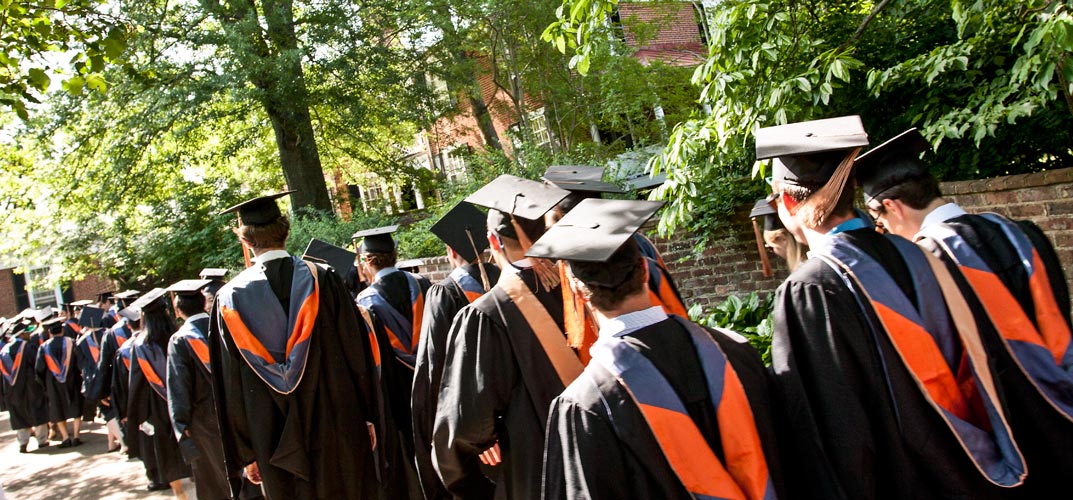
UVA McIntire Grads. Courtesy photo
An undergraduate education doesn’t come cheap nowadays. In 2019, the average college student graduated with $31,172 in student loan debt. That’s up from 2018 when the average was $29,200. As striking as that is, it’s a reality that many have to live with. That’s exactly why it’s critical for college applicants to examine the average debt at each school they’re interested in attending and weigh the costs and benefits.
P&Q analyzed data from 62 participating business schools this year and found that the average debt for students graduating in 2019 was $27,571. Only eight schools that reported debt data had an average debt under $20,000 — with five schools topping $40,000. Additionally, we also analyzed the percentage of students graduating with debt in 2019. Only 10 schools managed to stay under 30%, with 17 schools exceeding 50% of 2019 grads with debt.
Of the schools surveyed by P&Q, Brigham Young University’s Marriott School of Business and the University of North Carolina’s Kenan-Flagler Business School had the lowest percentage of students with debt at 21%. The University of New Hampshire’s Peter T. Paul College of Business and Economics had the highest percent with debt at 76%.
SCHOLARSHIPS ARE KEY
At schools that reported low debt, there seems to be a common theme: plenty of scholarships. For example, at UNC’s Kenan-Flagler Business School, several full-tuition scholarships are offered to incoming “direct admits” every year, and over $400,000 in merit-based scholarships are given to students annually.
The university also offers over $600,000 in need- and merit-based scholarships for global programs each year to offset study abroad costs for students.
And that scholarship aid seems to be helping.
UNC Kenan-Flagler graduates have a success rate of over 98% with employment outcomes and a median starting salary of $70,000 for an impressive ROI.
“We take seriously our mission — as a University — the first public university in the U.S. — and as a Business School to serve through teaching, research, and public service,” Anna Millar, assistant dean of the Undergraduate Business Program at Kenan-Flagler, says. “We have worked hard to provide access to learning and knockdown financial barriers. From both societal and economic perspectives, students ideally graduate with low amounts of debt to begin their post-graduate life.”
PUBLIC VS. PRIVATE
Another important differentiation that goes beyond numbers is the tuition cost of public universities versus private. In general, tuition at private B-schools tends to exceed that at public institutions.
For instance, at Drexel University’s LeBow College of Business, where 48% of students have an average debt of $47,193, the cost of tuition alone is $53,868. Compare that to the University of Virginia’s McIntire School of Commerce, a public university, where the cost of tuition is $24,796 for in-state students.
There are several factors that go into debt — let alone a college decision — but it’s important for applicants to examine the numbers and make a decision after their analysis.
DON’T MISS: POETS&QUANTS’ TOP VALUE BUSINESS SCHOOLS OF 2020 or THE MOST AFFORDABLE COLLEGES FOR LOW-INCOME STUDENTS










